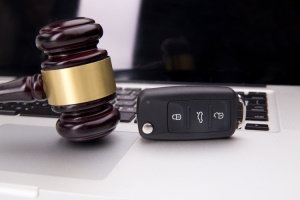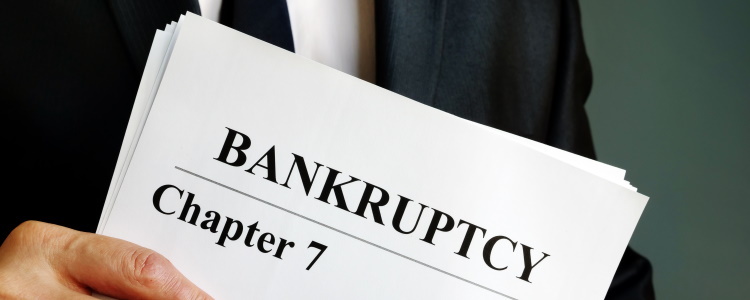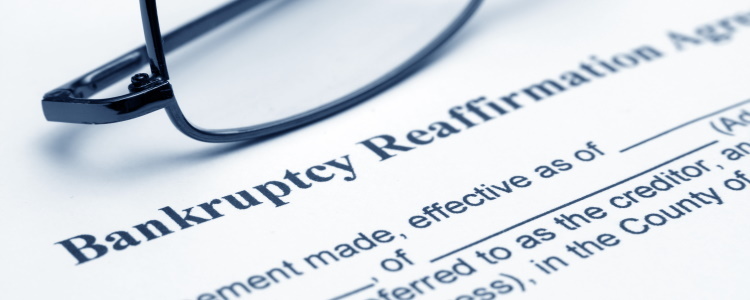Chapter 7 bankruptcy doesn’t have to leave you down and out. You have a few options to pursue if you want to keep your car in a Chapter 7 bankruptcy, but you have to act fast or it can be used to pay back your creditors before your remaining debt is wiped away.
Chapter 7 Bankruptcy
A Chapter 7 bankruptcy is a short process, generally lasting only four to six months. During this time, your court-appointed bankruptcy trustee is responsible for selling your assets and using the proceeds to pay off your creditors. The creditors are typically only paid an agreed-upon portion of your debt, and any debts remaining after the Chapter 7 bankruptcy is discharged are wiped away.
When you file a Chapter 7 bankruptcy, you have to fill out forms listing your assets, debts, living expenses, and exempt property for a period going back two years. This information is used by your bankruptcy trustee to help them liquidate some of your assets, and determine which you can keep.
The property you’re allowed to keep – known as exempt property – is determined by the state you live in. Most states allow you to keep some of the value of your home, as well as items of necessity such as clothing, home furnishings, tools of your trade, and a vehicle. The value you’re allowed to exempt for these items varies by state, and if the value of your car is over the exemption limit, you could lose it.
How to Keep Your Car in a Chapter 7 Bankruptcy
 Luckily, as soon as you file Chapter 7 bankruptcy, an automatic stay goes into effect, stopping creditors from collecting debts you owe or from repossessing your vehicle. This gives you time to decide which course of action to take with your car.
Luckily, as soon as you file Chapter 7 bankruptcy, an automatic stay goes into effect, stopping creditors from collecting debts you owe or from repossessing your vehicle. This gives you time to decide which course of action to take with your car.
In a Chapter 7 bankruptcy, if the equity in your vehicle meets or is below the exemption amount, you can keep your car one of two ways:
- Reaffirm your loan – When you reaffirm a loan in a Chapter 7 bankruptcy, you’re not including it in your bankruptcy. Instead, you and the lender agree that you’re going to continue making payments, and you remain responsible for the debt after the bankruptcy has been discharged. For reaffirmation to work, you must prove that you can afford your loan payments. If you can’t, the court can deny the agreement, and your vehicle can be repossessed.
- Redeem the car – To redeem your vehicle, you make a lump sum payment to your lender for the value of the car. This can be a saving grace if you have negative equity, because you pay the current market value of the vehicle, not the loan balance. The difference is then wiped out in your bankruptcy. If you can’t come to an agreement with the lender of the car’s value, the court decides.
If you’re unable to use either of these options, and the equity in your vehicle is above the exemption amount in your state, you won't be able to keep your car if you can't come up with the cash to make up the difference. However, you can surrender it.
Giving the vehicle back to the creditor during a Chapter 7 bankruptcy wipes out the debt, since you aren’t responsible for the amount owed not covered by the sale of the car.
Need Help Getting Your Next Car Loan?
Perhaps you filed a Chapter 7 bankruptcy and couldn’t avoid losing your vehicle, so now you’re faced with getting another one. In this case, you probably have to wait until your bankruptcy is discharged, which fortunately doesn’t take too long. However, because bankruptcy knocks down your credit score, you have to make sure you apply with the right lender.
At Auto Credit Express, we’ve got you covered when it comes to finding a post-bankruptcy auto loan. Our network of special finance dealerships across the U.S. works with a wide range of bad credit car lenders that want to help you.
Don’t hesitate any longer! Get started by filling out our no-obligation auto loan request form today!
















